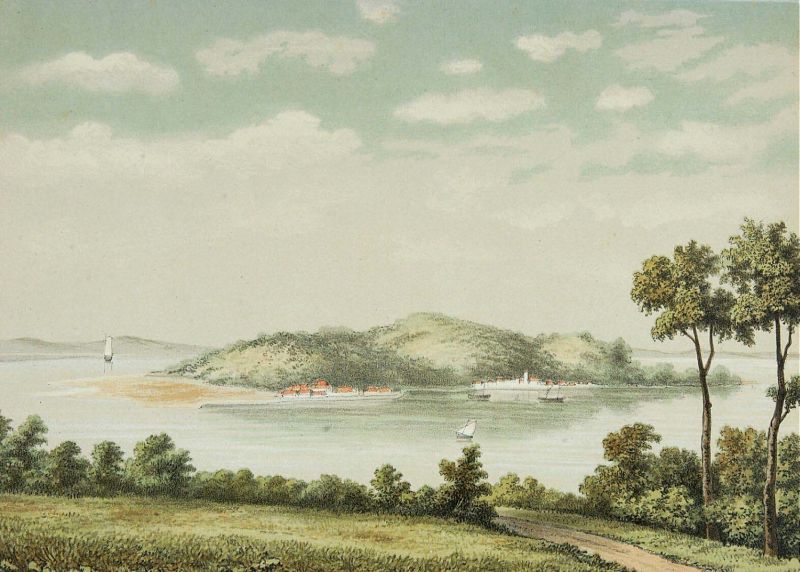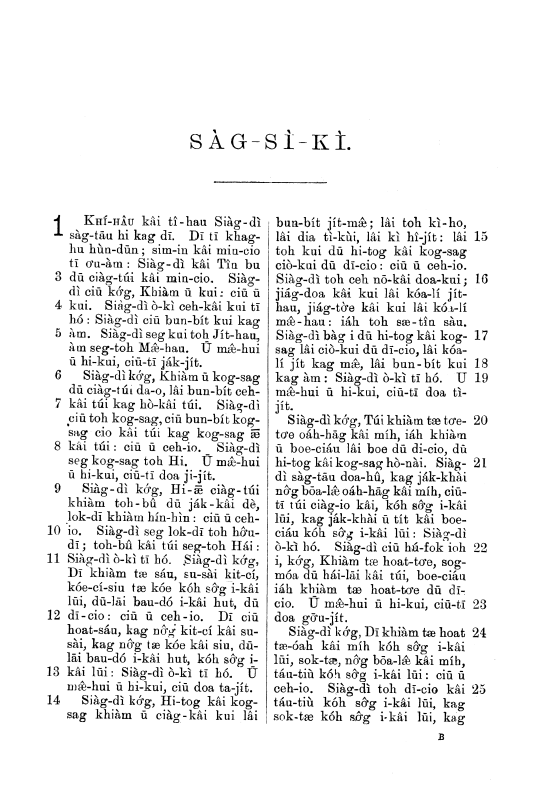|
Tionghoa
Chinese Indonesians (), or simply ''Orang Tionghoa'' or ''Tionghoa'', are Indonesians whose ancestors arrived from China at some stage in the last eight centuries. Chinese Indonesians are the fourth largest community of Overseas Chinese in the world after Thai Chinese, Thailand, Malaysian Chinese, Malaysia, and the Chinese Americans, United States. Chinese people and their Indonesian descendants have lived in the Indonesian archipelago since at least the 13th century. Many came initially as sojourners (temporary residents), intending to return home in their old age. Some, however, stayed in the region as economic migrants. Their population grew rapidly during the colonial period when workers were contracted from their home provinces in Southern China. Discrimination against Chinese Indonesians has occurred since the start of Dutch colonialism in the region, although government policies implemented since 1998 have attempted to redress this. Resentment of ethnic Chinese economi ... [...More Info...] [...Related Items...] OR: [Wikipedia] [Google] [Baidu] |
Riau Islands
The Riau Islands () is a provinces of Indonesia, province of Indonesia consisting of a group of islands located in the western part of the country. It was established in 2002 after being separated from the neighboring Riau Province. The capital of the province is Tanjung Pinang, while the largest city is Batam. It shares a maritime border with Riau and Jambi to the west, Bangka Belitung Islands to the south, Singapore to the northeast, Malaysia and West Kalimantan to the east, and Vietnam and Cambodia to the north. It comprises a total of 2,408 islands (1,798 having names) scattered between Sumatra, Malay Peninsula, and Borneo including the Riau Archipelago. Situated on one of the world's busiest shipping lanes along the Malacca Strait and the Natuna Sea (South China Sea), the province shares water borders with neighboring countries such as Singapore, Malaysia, and Brunei. The Riau Islands also have relatively large potential mineral resources and energy, as well as marine reso ... [...More Info...] [...Related Items...] OR: [Wikipedia] [Google] [Baidu] |
Indonesia
Indonesia, officially the Republic of Indonesia, is a country in Southeast Asia and Oceania, between the Indian Ocean, Indian and Pacific Ocean, Pacific oceans. Comprising over List of islands of Indonesia, 17,000 islands, including Sumatra, Java, Sulawesi, and parts of Borneo and New Guinea, Indonesia is the world's largest archipelagic state and the List of countries and dependencies by area, 14th-largest country by area, at . With over 280 million people, Indonesia is the world's List of countries and dependencies by population, fourth-most-populous country and the most populous Islam by country, Muslim-majority country. Java, the world's List of islands by population, most populous island, is home to more than half of the country's population. Indonesia operates as a Presidential system, presidential republic with an elected People's Consultative Assembly, legislature and consists of Provinces of Indonesia, 38 provinces, nine of which have Autonomous administrative divisi ... [...More Info...] [...Related Items...] OR: [Wikipedia] [Google] [Baidu] |
Minangkabau Language
Minangkabau (Minangkabau: , Jawi script: ; ) is an Austronesian language spoken by the Minangkabau of West Sumatra, the western part of Riau, South Aceh Regency, the northern part of Bengkulu and Jambi, also in several cities throughout Indonesia by migrated Minangkabau.Kajian Serba Linguistik : Untuk Anton Moeliono Pereksa Bahasa (2000) The language is also a lingua franca along the western coastal region of the province of North Sumatra, and is even used in parts of Aceh, where the language is called ''Aneuk Jamee''. Minangkabau is similar to Malay. The relationship between the languages is characterized in different ways. Some see Minangkabau as an early variety of Malay, while others think of Minangkabau as a distinct ( Malayic) language. Minangkabau is one of a few languages that generally lacks verb forms and grammatical subject-object distinctions. The Minangkabau language is still commonly spoken amongst the Minangkabau people, and it is used amongst the widesp ... [...More Info...] [...Related Items...] OR: [Wikipedia] [Google] [Baidu] |
Hainanese
Hainanese ( Hainan Romanised: ''Hái-nâm-oe'', Hainanese Pinyin: ''Hhai3 nam2 ue1'', ), also known as Qiongwen (), Qiongyu () or Hainan Min () is a group of Min Chinese varieties spoken in the far southern Chinese island province of Hainan and regional overseas Chinese communities such as in Singapore and Thailand. In the classification of Yuan Jiahua, it was included in the Southern Min group, being mutually unintelligible with other Southern Min varieties such as Hokkien– Taiwanese and Teochew. In the classification of Li Rong, used by the ''Language Atlas of China'', it was treated as a separate Min subgroup. Hou Jingyi combined it with Leizhou Min, spoken on the neighboring mainland Leizhou Peninsula, in a Qiong–Lei group. "Hainanese" is also used for the language of the Li people living in Hainan, but generally refers to Min varieties spoken in Hainan. Phonology The phonologies of the different varieties of Hainanese are highly divergent, with the Wench ... [...More Info...] [...Related Items...] OR: [Wikipedia] [Google] [Baidu] |
Hokchew
The Fuzhou language ( zh, t=福州話, s=福州话, p=Fúzhōuhuà; FR: ), also Foochow, Hokchew, Hok-chiu, or Fuzhounese, is the prestige variety of the Eastern Min branch of Min Chinese spoken mainly in the Mindong region of Eastern Fujian Province. As it is mutually unintelligible to neighbouring varieties (e.g. Hokkien) in the province, under a technical linguistic definition Fuzhou is a language and not a dialect (conferring the variety a 'dialect' status is more socio-politically motivated than linguistic). Thus, while Fuzhou may be commonly referred to as a 'dialect' by laypersons, this is colloquial usage and not recognised in academic linguistics. Like many other varieties of Chinese, the Fuzhou dialect is dominated by monosyllabic morphemes that carry lexical tones, and has a mainly analytic syntax. While the Eastern Min branch it belongs to is relatively closer to other branches of Min such as Southern Min or Pu-Xian Min than to other Sinitic branches such as Ma ... [...More Info...] [...Related Items...] OR: [Wikipedia] [Google] [Baidu] |
Cantonese
Cantonese is the traditional prestige variety of Yue Chinese, a Sinitic language belonging to the Sino-Tibetan language family. It originated in the city of Guangzhou (formerly known as Canton) and its surrounding Pearl River Delta. While the term ''Cantonese'' specifically refers to the prestige variety, in linguistics it has often been used to refer to the entire Yue subgroup of Chinese, including related but partially mutually intelligible varieties like Taishanese. Cantonese is viewed as a vital and inseparable part of the cultural identity for its native speakers across large swaths of southeastern China, Hong Kong and Macau, as well as in overseas communities. In mainland China, it is the ''lingua franca'' of the province of Guangdong (being the majority language of the Pearl River Delta) and neighbouring areas such as Guangxi. It is also the dominant and co-official language of Hong Kong and Macau. Furthermore, Cantonese is widely spoken among overseas Chinese in ... [...More Info...] [...Related Items...] OR: [Wikipedia] [Google] [Baidu] |
Teochew Dialect
Teochew, also known as Swatow or Teo-Swa, is a Southern Min language spoken by the Teochew people in the Chaoshan region of eastern Guangdong and by their diaspora around the world. It is sometimes referred to as ''Chiuchow'', its Cantonese rendering, due to English romanization by colonial officials and explorers. It is closely related to Hokkien, as it shares some cognates and phonology with Hokkien. Teochew preserves many Old Chinese pronunciations and vocabulary that have been lost in some of the other modern varieties of Chinese. As such, Teochew is described as one of the most conservative Chinese languages. History and geography Historically, the Teochew prefecture included modern prefecture-level cities of Chaozhou, Jieyang and Shantou. In China, this region is now known as Teoswa. Parts of the Hakka-speaking Meizhou city, such as Dabu County and Fengshun, were also parts of the Teochew prefecture and contain pocket communities of Teochew speakers. As the T ... [...More Info...] [...Related Items...] OR: [Wikipedia] [Google] [Baidu] |
Hakka Chinese
Hakka ( zh, c=, p=Kèjiāhuà; '' Pha̍k-fa-sṳ: '', zh, c=, p=Kèjiāyǔ; '' Pha̍k-fa-sṳ: '') forms a language group of varieties of Chinese, spoken natively by the Hakka people in parts of Southern China, Taiwan, some diaspora areas of Southeast Asia and in overseas Chinese communities around the world. Due to its primary usage in isolated regions where communication is limited to the local area, Hakka has developed numerous varieties or dialects, spoken in different provinces, such as Guangdong, Guangxi, Hainan, Fujian, Sichuan, Hunan, Jiangxi, Guizhou, as well as in Taiwan, Singapore, Malaysia, Thailand and Indonesia. Hakka is not mutually intelligible with Yue, Wu, Min, Mandarin or other branches of Chinese, and itself contains a few mutually unintelligible varieties. It is most closely related to Gan and is sometimes classified as a variety of Gan, with a few northern Hakka varieties even being partially mutually intelligible with southern Gan. There is also ... [...More Info...] [...Related Items...] OR: [Wikipedia] [Google] [Baidu] |
Hokkien
Hokkien ( , ) is a Varieties of Chinese, variety of the Southern Min group of Chinese language, Chinese languages. Native to and originating from the Minnan region in the southeastern part of Fujian in southeastern China, it is also referred to as Quanzhang ( zh, c=泉漳, poj=Choân-chiang, links=no), from the first characters of the urban centers of Quanzhou and Zhangzhou. Taiwanese Hokkien is one of the national languages in Taiwan. Hokkien is also widely spoken within the overseas Chinese diaspora in Singapore, Malaysia, the Philippines, Indonesia, Cambodia, Myanmar, Hong Kong, Thailand, Brunei, Vietnam, and elsewhere across the world. Mutual intelligibility between Hokkien dialects varies, but they are still held together by ethnolinguistic identity. In maritime Southeast Asia, Hokkien historically served as the lingua franca amongst overseas Chinese communities of Han Chinese subgroups, all dialects and subgroups, and it remains today as the most spoken Varieties of Ch ... [...More Info...] [...Related Items...] OR: [Wikipedia] [Google] [Baidu] |
Languages Of Indonesia
Indonesia is home to over 700 living languages spoken across its extensive archipelago. This significant linguistic variety constitutes approximately 10% of the world’s total languages, positioning Indonesia as the second most linguistically diverse nation globally, following Papua New Guinea. The majority of these languages belong to the Austronesian language family, prevalent in the western and central regions of Indonesia, including languages such as Acehnese language, Acehnese, Sundanese language, Sundanese, and Buginese language, Buginese. In contrast, the eastern regions, particularly Western New Guinea, Papua and the Maluku Islands, are home to over 270 Papuan languages, which are distinct from the Austronesian family and represent a unique linguistic heritage. The language most widely spoken as a native language is Javanese language, Javanese, primarily by the Javanese people in the Central Java, central and East Java, eastern parts of Java Island, as well as across m ... [...More Info...] [...Related Items...] OR: [Wikipedia] [Google] [Baidu] |
Malay Trade And Creole Languages
In addition to its Classical language, classical and modern Literary language, literary form, Malayic languages, Malay had various Nonstandard dialect, regional dialects established after the rise of the Srivijaya, Srivijaya empire in Sumatra, Indonesia. Also, Malay spread through interethnic contact and trade across the south East Asia Archipelago as far as the Philippines. That contact resulted in a lingua franca ("trade language") that was called ''Bazaar Malay'' or ''low Malay'' and in Malay ''Melayu Pasar''. It is generally believed that Bazaar Malay was a pidgin, influenced by contact among Malay, Hokkien, Portuguese, and Dutch traders. Besides the general simplification that occurs with pidgins, the Malay lingua franca had several distinctive characteristics. One was that possessives were formed with ''punya'' 'its owner, to have'; another was that plural pronouns were formed with ''orang'' 'person'. The only Malayic affixes that remained productive were ''tər-'' and ''b� ... [...More Info...] [...Related Items...] OR: [Wikipedia] [Google] [Baidu] |




